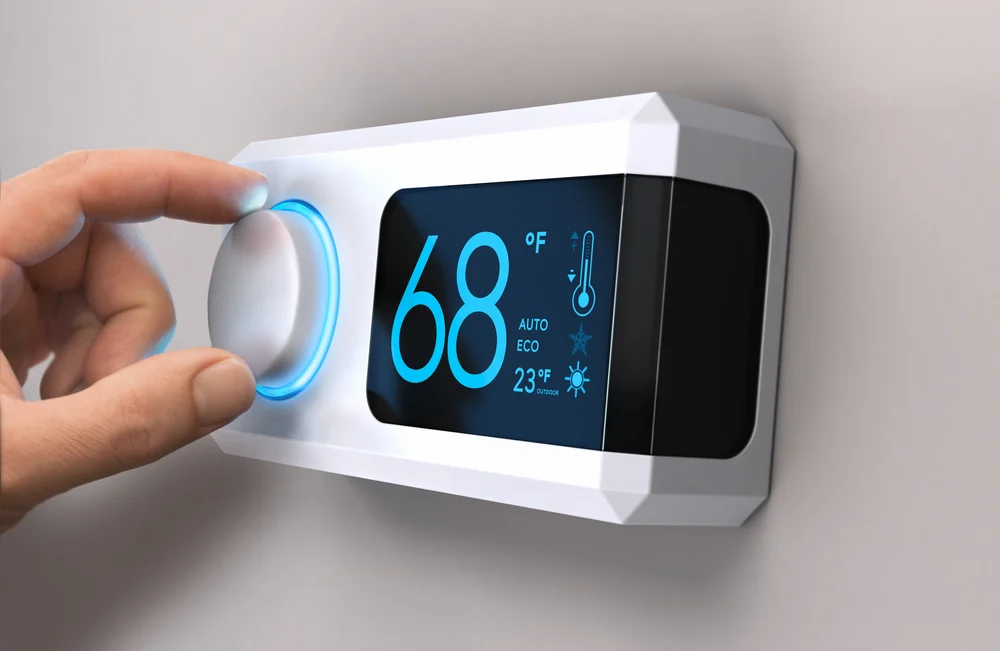Starting your day in a comfortable home environment often depends on one small yet powerful device—the thermostat. It’s the command center of your heating and cooling system, ensuring the perfect indoor temperature throughout the seasons. However, the efficiency and reliability of your thermostat depend greatly on the performance of your HVAC system. Regular heating and cooling services can fine-tune this relationship, allowing the thermostat to communicate accurately, respond quickly, and maintain ideal comfort levels. We will explore how professional maintenance, calibration, and system optimization can enhance thermostat performance, reduce energy costs, and improve overall home comfort.
Key Ways Heating & Cooling Services Optimize Thermostat Performance
1. System Calibration for Accurate Temperature Readings
One of the most crucial steps in optimizing thermostat performance is ensuring that the system is properly calibrated. When the thermostat senses the wrong temperature, it can lead to inconsistent heating or cooling, resulting in discomfort and energy waste. Camas WA heating and cooling services play an important role in this process, as HVAC technicians assess the temperature differentials between the thermostat and various points in the home to ensure accuracy. This process typically involves testing airflow, checking refrigerant levels, and verifying that sensors are functioning correctly.
Proper calibration ensures that the thermostat sends accurate signals to the HVAC system, allowing it to maintain the set temperature efficiently. When the system is balanced, the thermostat’s readings are more accurate, resulting in a consistent climate. This not only reduces unnecessary system strain but also helps lower energy bills over time, making calibration a key element of heating and cooling maintenance.
2. Enhancing Communication Between System Components
Modern HVAC systems rely on clear communication between key components, including the thermostat, air handler, and compressor. If these connections become weak or unresponsive due to wiring issues, outdated controls, or software problems, performance can drop significantly. Heating and cooling services address this by inspecting control boards, tightening connections, and updating firmware when necessary. For smart thermostats, technicians typically verify that Wi-Fi connectivity and integration with other devices are functioning properly. This seamless communication ensures that when the thermostat adjusts the temperature, the HVAC system responds immediately and accurately. Improved coordination prevents energy loss, minimizes temperature fluctuations, and ensures consistent comfort. Ultimately, optimizing communication enhances system responsiveness, extends equipment lifespan, and maintains energy efficiency throughout the year.
3. Cleaning and Maintaining HVAC Components for Smooth Operation
Dust, debris, and clogged filters can significantly impact thermostat performance by disrupting airflow and causing uneven temperature regulation. Even the most advanced thermostat cannot compensate for an HVAC system struggling with restricted airflow. Regular cleaning and maintenance of coils, ducts, and filters improves overall air circulation, allowing the thermostat to work more effectively. When air flows freely through the system, the thermostat receives more accurate temperature readings, helping it adjust quickly to changing conditions. Maintenance visits often include checking blower motors and ensuring all mechanical parts operate smoothly. This not only helps the thermostat function optimally but also improves indoor air quality. Over time, this preventive care reduces system strain, prevents unnecessary breakdowns, and maintains consistent comfort in every room of the home.
4. Smart Thermostat Integration and Optimization
Heating and cooling professionals play a key role in integrating and optimizing smart thermostats for maximum efficiency. A properly installed smart thermostat can learn your routines, adjust temperatures automatically, and even detect when you are home or away. However, incorrect installation or poor system pairing can prevent these features from functioning correctly. HVAC technicians ensure compatibility between the thermostat and the system’s heating and cooling capacities.
They fine-tune settings, enable energy-saving modes, and test automation features to ensure seamless operation. When optimized, smart thermostats can reduce energy consumption by adjusting based on real-time data, humidity levels, and outdoor conditions. This creates a comfortable environment while lowering utility bills. Regular maintenance checks keep software and sensors up to date, ensuring the thermostat continues to perform efficiently over time.
5. Detecting and Correcting System Inefficiencies Early
Regular heating and cooling inspections not only keep your thermostat running efficiently but also identify system inefficiencies before they become costly problems. A thermostat that frequently cycles the system on and off could indicate issues such as clogged vents, refrigerant leaks, or failing components. HVAC technicians utilize diagnostic tools to identify these early warning signs and implement corrective measures.
By promptly addressing inefficiencies, the system remains responsive to thermostat commands, thereby avoiding unnecessary energy consumption. This proactive approach enhances comfort, consistency, and prevents sudden system breakdowns. Furthermore, maintaining system health supports thermostat longevity, ensuring it continues to provide accurate readings and efficient control. By combining early detection with prompt repairs, heating and cooling services safeguard both system performance and household comfort.
6. Improving Energy Efficiency and Reducing Utility Costs
A properly maintained heating and cooling system allows the thermostat to regulate temperature without overworking the equipment. When ducts are sealed, filters are replaced, and airflow is optimized, the thermostat doesn’t have to send repeated signals to maintain comfort. This balance reduces overall energy consumption, leading to lower monthly utility bills. Technicians may also suggest energy-saving thermostat settings for different seasons, helping homeowners maximize efficiency without sacrificing comfort. Over time, these improvements contribute to a more sustainable home environment. Enhanced thermostat performance means the system operates more efficiently and less frequently, reducing wear and extending the lifespan of both the HVAC unit and the thermostat itself.
Thermostat performance is only as strong as the heating and cooling system supporting it. Through professional calibration, component maintenance, smart integration, and seasonal tune-ups, HVAC services ensure the thermostat operates with precision and reliability. The result is a thermostat that accurately responds to your home’s needs, optimizes energy usage, and maintains an ideal indoor climate throughout the year. By investing in regular heating and cooling services, homeowners can enjoy a smoother, more efficient system that works in perfect harmony with their thermostat.
